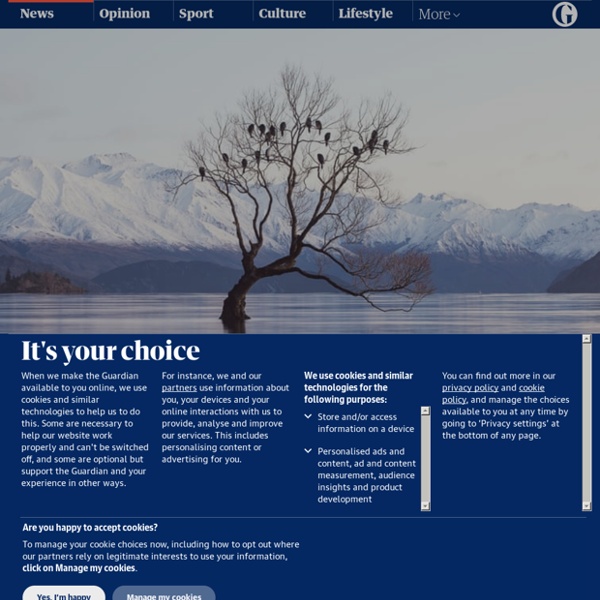Why a Climate-Denial Coalition May Be Cracking Apart
If you read a lot of climate commentary, you may get the sense that the fossil-fuel industry, working essentially as a rogue actor, is singularly responsible for America’s lack of climate policy. This isn’t necessarily … wrong, but it’s not exactly correct either. Since the modern era of climate politics began, in 1988, the fossil-fuel industry has worked as a kind of political nexus, a place where lots of different interests—steelmaking, automaking, organized labor—come together to pursue the same goals. One of the best examples of this can be found in America’s freight-railroad industry.
How the Dawes Act Stole 90 Million Acres of Native American Land
In the long, dark history of the United States government's mistreatment of Native Americans, most people are familiar with the Trail of Tears, in which approximately 15,000 Native American men, women and children died during forced relocation from their tribal homelands in the American Southeast to Indian Territory in modern-day Oklahoma. But the theft of Native American tribal land didn't stop with the Indian Removal Act of 1830 that authorized the Trail of Tears. Over the next century, Congress passed a series of laws that systematically stripped tribes of their lands, selling them to white settlers and corporations.
Climate crisis has shifted the Earth’s axis, study shows
The massive melting of glaciers as a result of global heating has caused marked shifts in the Earth’s axis of rotation since the 1990s, research has shown. It demonstrates the profound impact humans are having on the planet, scientists said. The planet’s geographic north and south poles are the point where its axis of rotation intersects the surface, but they are not fixed.
The Estate Tax Is a Meritocratic Necessity
by Robert Montenegro Even the most cynical American has to admit that the so-called American Dream, which purports itself to be the pinnacle of free society and new-world meritocracy, is a lovely little idea. Everyone begins on an even playing field; you're offered an equal chance as anyone else to succeed; and if you're tactful and lucky, you'll achieve prosperity. It's the antithesis of old-world aristocratic values.
Maps Show How Dramatically Fertilizer is Choking the Great Lakes
The Great Lakes are turning into giant “dead zones” like the Gulf of Mexico and the Atlantic. If we don’t change the way we grow food, we will destroy 1/5 of the world’s fresh surface water and all the fish in it. National Geographic just published a series of maps revealing the extent of the damage the Great Lakes have suffered from agricultural fertilizers, sewage waste water, warming temperatures and invasive species. The depressing images make it clear that our “civilized” lifestyles (primarily our unsustainable farming methods) are creating gigantic aquatic “dead zones” in not only our oceans, but our lakes as well. Dead zones are where oxygen levels are so low no aquatic life can survive. The five Great Lakes contain 1/5 of the world’s fresh surface water, what National Geographic calls “North America’s most valuable resource.”
The end of capitalism has begun
The red flags and marching songs of Syriza during the Greek crisis, plus the expectation that the banks would be nationalised, revived briefly a 20th-century dream: the forced destruction of the market from above. For much of the 20th century this was how the left conceived the first stage of an economy beyond capitalism. The force would be applied by the working class, either at the ballot box or on the barricades. The lever would be the state. The opportunity would come through frequent episodes of economic collapse. Instead over the past 25 years it has been the left’s project that has collapsed.
Japan's recovery from tsunami disaster, by the numbers
Japan's recovery from tsunami disaster, by the numbers By MARI YAMAGUCHI March 11, 2021 GMT TOKYO (AP) — Ten years after a massive earthquake and tsunami devastated Japan’s northeastern coast, triggering meltdowns at the Fukushima nuclear power plant, much has been achieved in disaster-hit areas but they are still recovering. Numbers show how much progress has been made and what still remains.
The Second Amendment Was Never Meant to Protect an Individual’s Right to a Gun
This post originally appeared at The Nation. Gun rights activists gather at a public pavilion prior to a march to the Ferguson Police station on November 16, 2015 in Ferguson, Missouri. (Photo by Scott Olson/Getty Images)
Is this the end of forests as we've known them?
Camille Stevens-Rumann never used to worry about seeing dead trees. As a wildland firefighter in the American west, she encountered untold numbers killed in blazes she helped to extinguish. She knew fires are integral to forests in this part of the world; they prune out smaller trees, giving room to the rest and even help the seeds of some species to germinate.



